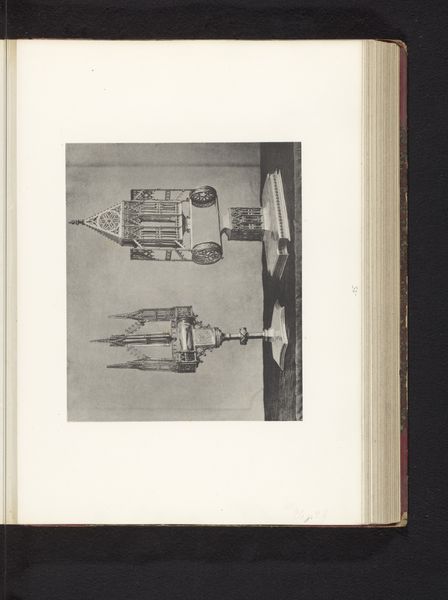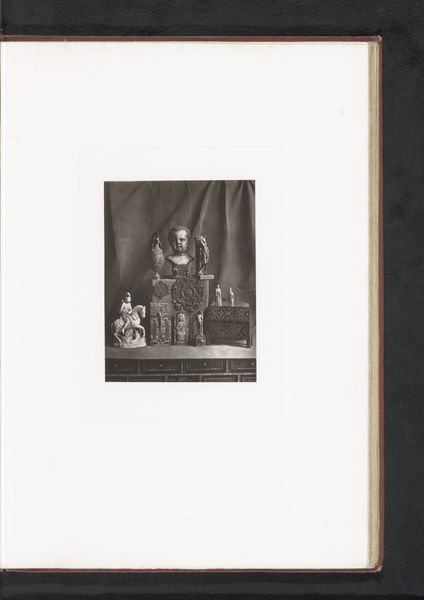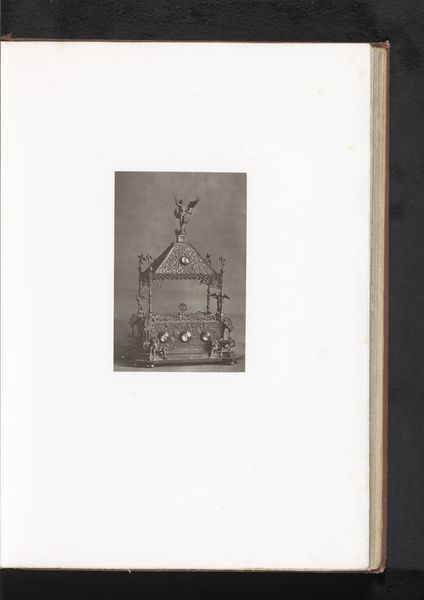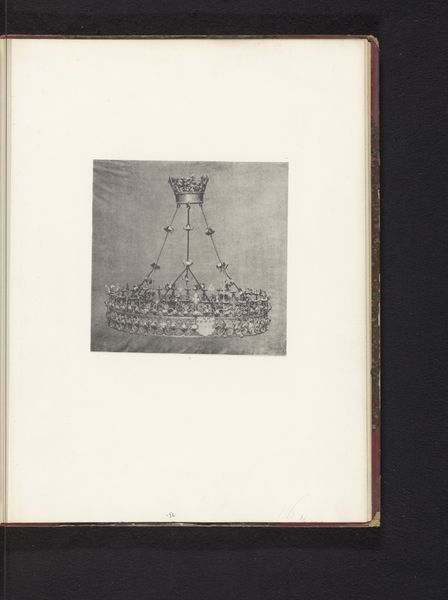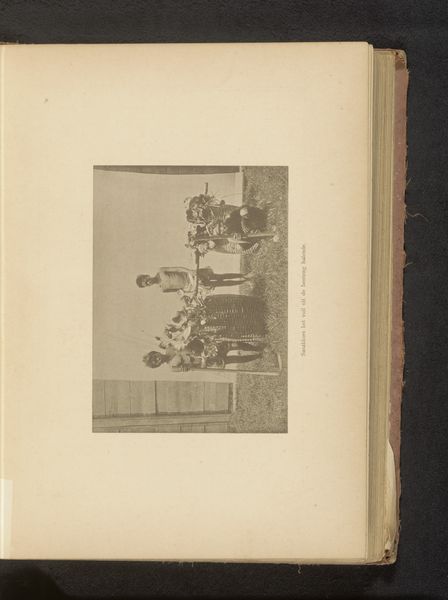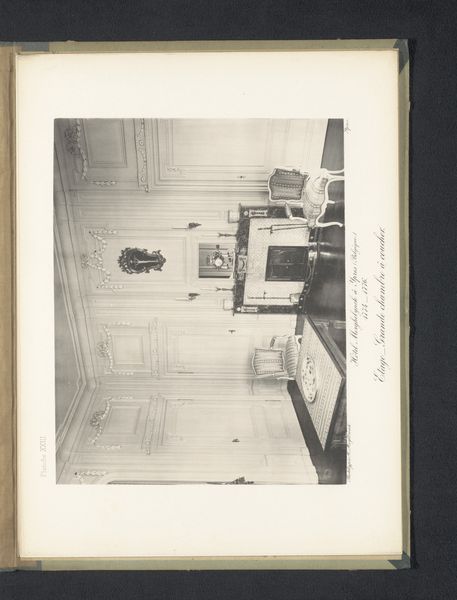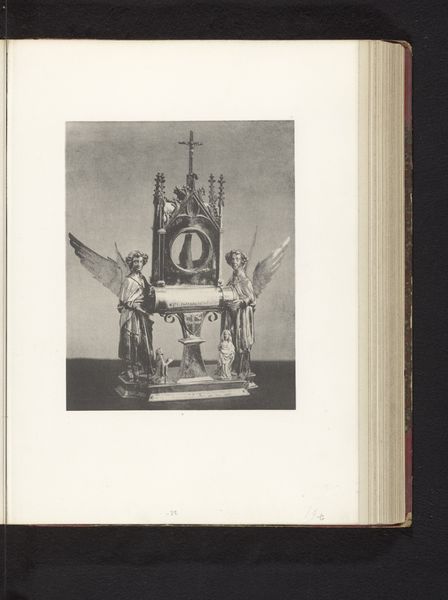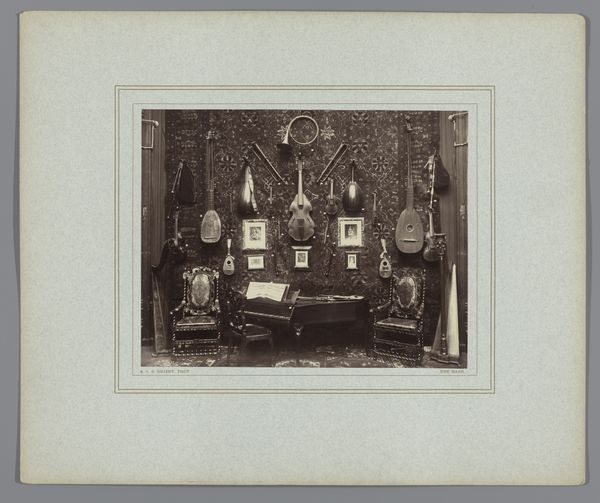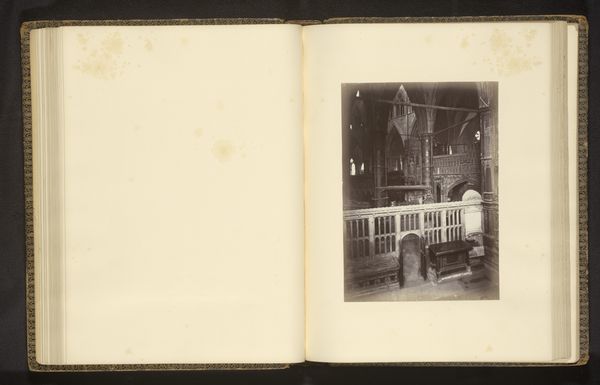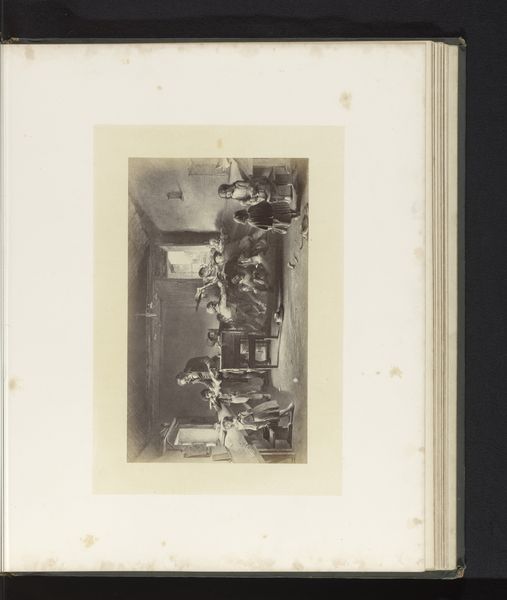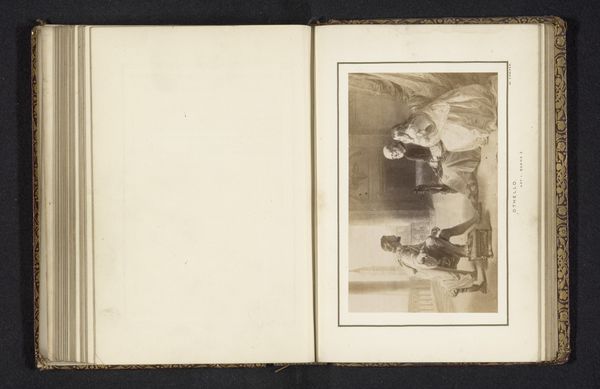
Twee vergulde zilveren chrismatoria, opgesteld op een tentoonstelling over religieuze objecten uit de middeleeuwen en renaissance in 1864 in Mechelen before 1866
0:00
0:00
photography, gelatin-silver-print
#
medieval
#
11_renaissance
#
photography
#
vessel
#
gelatin-silver-print
Dimensions: height 154 mm, width 180 mm
Copyright: Rijks Museum: Open Domain
Editor: This photograph, taken before 1866 by Joseph Maes, depicts "Twee vergulde zilveren chrismatoria," two gilded silver chrismatories exhibited in Mechelen in 1864. I find the setting fascinating – capturing religious objects displayed in what seems like a proto-museum context. What's your take? Curator: It’s interesting how this photograph serves as a record, not just of the objects, but of a particular moment in the history of exhibiting art and religious artifacts. This was a period of intense interest in cataloging and displaying cultural heritage. Think about the burgeoning museum culture in the 19th century: how did displaying these objects shift their meaning? Editor: It almost feels like the photo itself is becoming part of that cataloging process you mentioned. It's not just preserving the objects but also preserving the act of exhibiting them. Curator: Precisely. Photography democratized access to art in a way previously unimaginable. It also raises questions about the intent behind the exhibit. Was it purely celebratory of religious objects, or did it reflect a more complex relationship between church, state, and the rising tide of secularism? Who was the intended audience for this exhibit? Editor: It makes you wonder about the selection process too – why *these* chrismatories? And what happened to them afterwards? It is like this photo has turned into some sort of an evidence file! Curator: The existence of the photograph speaks to the impulse to document and classify. Consider the medium – gelatin silver print – in its own historical context. Photography was both an art form and a tool for documentation, contributing to shaping public perceptions. Editor: That's a perspective shift for me. It's easy to see the objects, but the photo is part of the historical picture, too! Thank you. Curator: Indeed! Looking at historical exhibition photography brings many threads together, including religious objects, museum and secular values, art production and reception. It's these points of intersection which make it thought provoking.
Comments
No comments
Be the first to comment and join the conversation on the ultimate creative platform.


